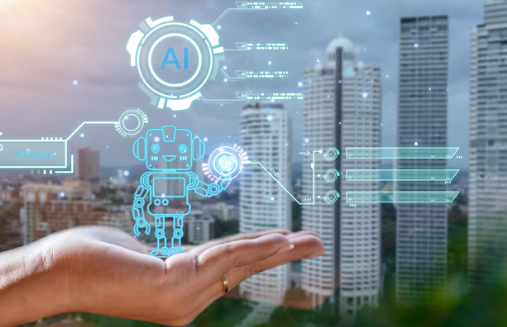There’s hype around the world that the Metaverse will change how we do everything. Metaverse refers to the digital world where people gather to play, work, and do almost everything they usually do in real life.
Soon, people will be seen wearing tech goggles to enjoy immersive, three-dimensional experiences in astounding online spaces. The concept is still in the evolution stage, but we are a lot closer to this distant dream today than we were yesterday.
In this quest, we have seen a subtle development and collaboration of the metaverse with Web 3.0. And this is something that will change the way we know AI and ML technologies.
Let’s take you deeper into the concept of the metaverse and how it is about to become everyone’s reality soon.
What is the Metaverse? How is it changing the work culture?
Before we dive deeper into the metaverse concept, let’s start with the basics of what it is and how it is destined to change the work culture.
Keep your thoughts aside and navigate your thoughts about an experience like attending office meetings from the beachside or taking notes while floating in space at the International Space Station. How convenient does that feel?
With Metaverse, all you have to do is send your AI twin to take the workload off your shoulders. It is the future of work, as the Metaverse had promised. Neal Stephenson, the author of the book Snow Crash, quoted his version of the future world that will revolve around virtual reality in 1992, long before the Metaverse was even a concept.
To give you clarity, Metaverse is a network of three-dimensional virtual worlds that is meant for people to do business, build social connections, and interact through virtual AI avatars. In short, it is the virtual form of the internet we use today!
Even though the utilization of this concept has not been extended far enough, it is still a hyped technology jump. Metaverse is a big thing now, and tech aspirants are hopping on it.
Metaverse is a cluster of technologies such as blockchain, digital currencies, ML, gaming, VR platforms, sensors, etc.
Metaverse is revamping the work culture! How?
To experience Metaverse’s maximum output, you’ll need a VR headset.
Researchers, developers, and great tech minds are working immensely hard to develop technology to support computer-generated holography. It is to enable access to Metaverse at workspaces without the need for VR headsets. The two possible solutions derived so far are either by using the virtual viewing windows for creating the holograms or by deploying specific holographic pods.
Meta, previously known as Facebook, is working towards developing haptic gloves. The idea is to allow metaverse users to interact better with virtual 3-D objects. With such gloves, it will be possible for users to feel the sensation of pressure, texture, and movement.
Metaverse comes with a promise to enable new levels of teamwork and collaboration. We already have NextMeet, an avatar-based metaverse platform that promotes interacting, learning, working, and collaborating. This platform intends to eliminate the workforce’s sense of disconnectedness and isolation, which commonly occurs due to remote or hybrid work setups.
Thus, this keeps the employees engaged, and their productivity is constantly scaling!
Metaverse and Web 3.0–The Key to Promote Low-Code Development
Now that you know how we have already taken a couple of steps within the arena of Metaverse, let’s see how Web 3.0 is revolutionizing it. Web 3.0 is the concept that portrays the next evolution of the World Wide Web. Here, the users will find themselves connected through a decentralized network while still having control over their data.
It is about getting yourself into the digital experience, which somehow shares a vibe similar to that of Metaverse. They are indeed different from one another. Metaverse is a parallel virtual world in which users interact with one another. It is expanding the internet into a virtual environment.
Do you have questions on how Web 3.0 relates to the Metaverse?
If yes, then you should know that people use Web 3.0 to access the Metaverse, just like a vehicle accesses the highway.
With Web 3.0, users will be more likely to use the decentralized ownership of the web. While in the metaverse, people will be using the digital environment to create economies and interact in real-time without regard to ownership.
In accordance with both technologies, the adoption and success of Metaverse and Web 3.0 are possible based on our abilities to infuse the internet experience through AI or ML capabilities. Hence, this opportunity opens up the door for all low-code developers. Hence, simple drag-and-drop functionalities with AI will be embedded into Web 3.0 services and applications.
Metaverse and Web 3.0 will clear out the barriers for new forms of applications that will be controlled by the users, not any specific entity. Low-code development will kick in and change the future of how quickly developers can bring applications online.
Product Engineering and Metaverse: Harnessing the Collective Power of Technology
The industrial and product engineering companies are placing big bets on Metaverse and have seen success.
For instance, Siemens Energy shared a report that implementing Metaverse for inspection and maintenance applications reduced their downtime by around 70%. Thus, their steam turbine business saved a whopping $1.7 billion.
Product engineering is now coupling the immersive and intuitive metaverse dimension with the use of digital twins. Data pools boost this utilization across all operations technologies, systems, IT, and departments.
It helps designers, architects, and engineers cooperate. In this way, they can exhibit the models remotely without traveling. It is leading an innovative way of using the intranet and internet for companies using haptic feedback, 3D modeling resources, and VR headsets.
Ways Metaverse is Already Helping the Manufacturing Businesses
To help you understand how Metaverse is helping product engineering and the overall manufacturing business as a whole, here are a few of the ways that are practically experienced:
- Furniture manufacturers offer customers an amazing virtual experience through websites, allowing them to design living spaces.
- Companies are using a 3D representation on virtual platforms of the facility or plant alongside the production engineering lines. It will support the organization in manufacturing different products with ease.
- The real estate developers or site engineers will have the flexibility to check the construction progress at the work sites.
- With haptic and 3D technology, businesses can be an integral part of the product design process from almost anywhere worldwide.
Conclusion
Metaverse is no longer a dream, as it has entered our realities. It is not just about changing the fate of business productivity; it will also lead to developing an exponential customer experience. Following that, the employee experience will improve, which will simultaneously contribute to the productivity of a business.
Decision-making will now be easy, as the digital twins of physical scenarios and products will make that possible. There’s a lot more to Metaverse and its utilization in the long run.If you intend to learn more about Metaverse, click here to explore the understanding and implementation of STL Digital towards this thriving technology in sectors of product engineering.
FAQs
Metaverse is triggering new digital behaviors for businesses. Companies will now have the potential to hold virtual sessions for training and operations through AR or VR headsets. Collaborating with remote teams will be easy, keeping the employees engaged with the workspace. It intends to bring workers together from around the world for added productivity.
Metaverse and Web 3.0 both use crypto and blockchain technologies. But Metaverse is also an integrated technology that uses AR and VR. They both work differently but are used alongside one another to bring development to the future use of the internet for varying applications.
Web 3.0 is the third evolution of the internet and focuses on building a completely decentralized web. Metaverse, on the other hand, is a technology idea that aims to combine real and virtual worlds through virtual spaces and VR.
There’s no single way of entering or accessing the metaverse. It is not like the standard internet, where you can gain access through your chosen browser. For dedicated virtual spaces, each metaverse can only be accessed through its own VR and/or AR hardware.



